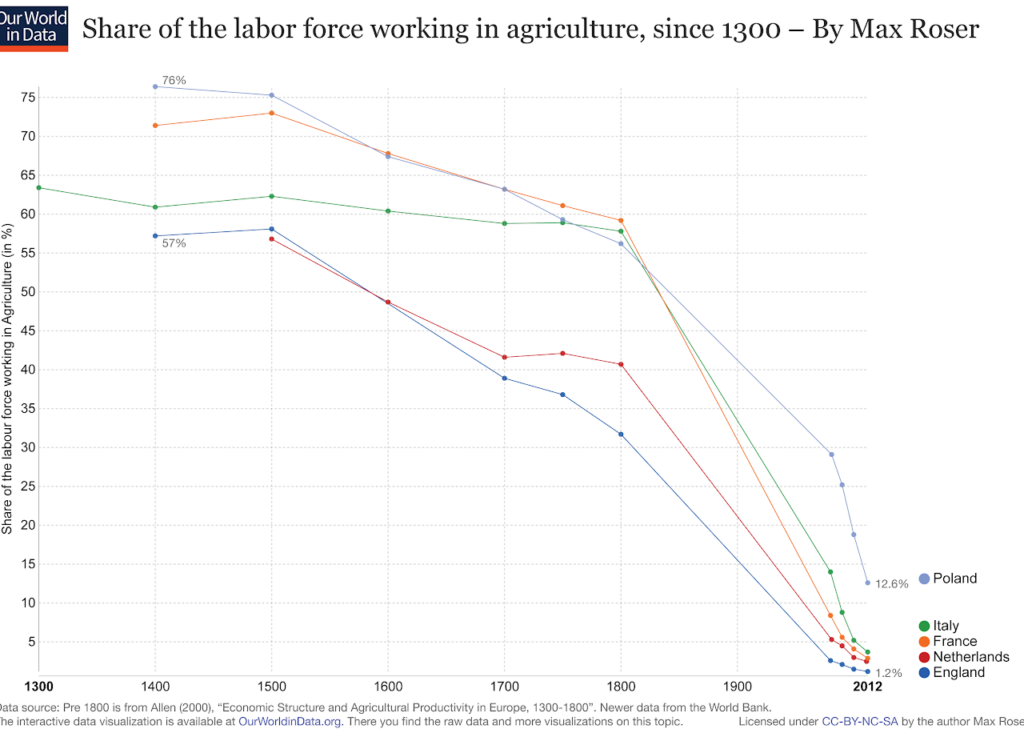Food production
An important element that was important to the survival and reproduction of our ancestors was the use of tools to extract enough food from the environment. With tools, more food could be procured more efficiently than with “bare hands”. For most of our evolutionary history, we were hunters and gatherers. An innovation with far-reaching consequences was the “invention” of agriculture.
Agriculture is a kind of co-evolution or symbiosis of humans and other living things: certain plant and animal species present in the environment have been favored by humans for food, processed for clothing and other purposes, or used for protection and work. This preferential use of certain species has led people to preferentially treat, feed, or protect these species, or the seeds of plant species accumulated in their environment. So began the domestication – the natural selection of living things, in which the human is selection factor (also called “artificial selection” when this is done more intentionally). In addition to humans, some insect species have also undergone symbiosis by breeding and cultivating other species: e.g. leafcutter ants, which have been cultivating certain strains of fungi in their nests for 50 million years.
Compared to the fungus cultivation of leafcutter ants, human agriculture is very young – it originated around 10,000 to 4,000 years ago in parallel in several regions of the world. Through agriculture, more food, and more nutritious food, can be extracted from the environment than by hunting and gathering. Thus, agriculture contributed significantly to an increase in population sizes. Agriculture changed the diet of humans and also our genes. For example, one third of people in the world today have a lactose tolerance, i.e. they can digest milk and dairy products in adulthood. These are mainly people who come from regions where animal husbandry and dairy processing has a long history.
Improved technologies (plowing, mechanization, fertilization, scientific breeding of varieties) have increased agricultural productivity. One farmer could produce more and more food and thus supply people around them. This has allowed more people to specialize in other work – craft, accounting, commerce, education, science, etc.
In countries with high industrialization, only a small proportion of people work in agriculture today, while in other countries more than 90% of the population work in agriculture. Globally, around 40% of people work in agriculture.
The Goal 2 of Global Sustainable Development Goals is to eliminate hunger in the world and to secure the nutrition of our global society in a sustainable way.
Today, about 800 million people are still suffering from hunger, and about 2 billion people suffer from malnutrition.
How and what will we eat and drink in the future?
How can we ensure that all people are able to have a diet that does not harm their health?
How can we ensure that no one in the world needs to go hungry?
How will climate change, technologies, and other factors impact food security in the future?

How does agriculture impact the environment?

